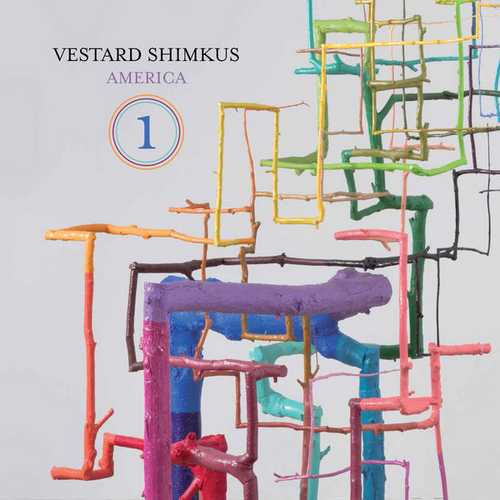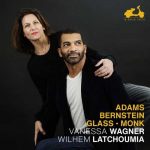
Composer: Elliott Carter, George Crumb, Philip Glass, Charles Tomlinson Griffes, Vestard Šimkus
Performer: Vestard Šimkus
Format: FLAC (tracks)
Label: Artalinna
Release: 2021
Size: 952 MB
Recovery: +3%
Scan: yes
Glass: Mad Rush
01. Part A – Part B (until Bar 101). Flowing
02. Part B (Bar 102 – Bar 154)
03. Part C (Bar 155 – Bar 231)
04. Part D (Bar 232 – Bar 273)
Griffes: Piano Sonata, A. 85
05. Feroce – Allegretto con moto
06. Tempo primo, flebile – Agitato molto – Poco agitato – Tranquillamente, espressivo
07. Molto tranquillo – Poco agitato – Appassionato – Tranquillo
08. Allegro vivace – Appassionato – Lento – Presto
Carter: Two Thoughts About the Piano
09. I. Intermittences (Tempo flessibile)
10. II. Caténaires (Jaillissant)
11. Crumb: Processional (Sempre pulsando, estaticamente)
Šimkus: Piano Sonata “Light Years Away”
12. I. There (Volando e intimico)
13. II. Here (Molto rubato)
In programming terms alone, this America-themed programme from Latvian pianist-composer and former Pēteris Vasks pupil Vestard Shimkus is extremely nicely put together. Philip Glass’s Mad Rush serves as the curtain-raiser – a work originally created and performed on the organ of New York’s cathedral of St. John the Divine in honour of the Dalai Lama’s 1979 first public address in North America, but now largely performed on the piano. Onwards, and Shimkus leads us through a succession of hops back and forth between the 20th and 21st centuries, beginning with Charles Tomlinson Griffes’ Piano Sonata, sitting as a pleasingly organic segue despite its much earlier composition date of 1917, thanks to its own concise, abstract language (in fact “wandering in the nowhere” was how Musical America’s bemused Herbert Peyser described it when it first appeared).
Next come Elliott Carter’s Two Thoughts About the Piano, Intermittences and Caténaires, written in 2005 and 2006 respectively for Peter Serkin and Pierre-Laurent Aimard. Then George Crumb’s flowing 1984 dreamscape, Processional, described by Crumb himself as “an experiment in harmonic chemistry” for its blending of whole-tone, chromatic and modal elements. The programme then concludes with Shimkus’s own two-movement Piano Sonata “Light Years Away”, feeling like an eminently natural coda with its otherworldly, minimalist-inspired language.Shimkus brings a pleasing soft warmth to the programme’s many dreamlike landscapes, going for a clearly haloed sound, but no means at the expense of definition; and if you want a great combination of definition and technical aplomb then head to Carter’s Caténaires, with its dizzyingly high-speed single line of notes. Part voicing and architecture are also strongly present.
Equally strong is the sheer physical power Shimkus hurls at the programme’s louder moments, the first taster of this coming with the thunderous wall of sound suddenly hitting your ears at Mad Rush’s first outburst. This, combined with the very resonant recording space and up-close capturing, makes for an intense listen when the dynamics are at the top end. Your ears feel literally as though they’re brushing the piano’s open lid. So, while some listeners will love that sense of sonic immediacy, others will find it uncomfortably overpowering. Either way, though, it’s certainly an experience.



